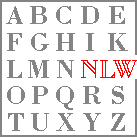



 | |
| The orthography of machine-readable Neolatin texts: A plaidoyer for minimal intervention | |
   |
There is no unified 'classical' spelling (cp. Lewis&Short vs. OLD vs. ThLL). An early example of the contradictory result of standardization (unavoidable in print) is the fact, that the TLL spells some compounds with ad- not assimilated (e.g. adfleo), but inserts them in the alphabetical sequence as if they were assimilated (i.e. adfleo after afflatus), while others appear under ad-, even though assimilated forms prevail in the ms. tradition (e.g. admoneo/ammoneo, which thus appears some hundred pages before adfleo). Electronic publications need not make that kind of decision.
Also, surprisingly, modern conventions may be untenable etymologically.
cum: Modern editorial conventions for classical texts mostly write cum for both the conjunction and the preposition. Already in the Renaissance some scholars were aware that the conjunction cum/quom should be distinguished from the preposition and spelt it quum, qum or quom. Are we to normalize that away? Or introduce quum everywhere?
In some cases modern conventions make texts more difficult to read. Esp. the separation of enclitics (-ve and -que) favoured by some Neolatin authors can be helpful. Obviously, this feature cannot be re-introduced, but might as well be retained if already existent.